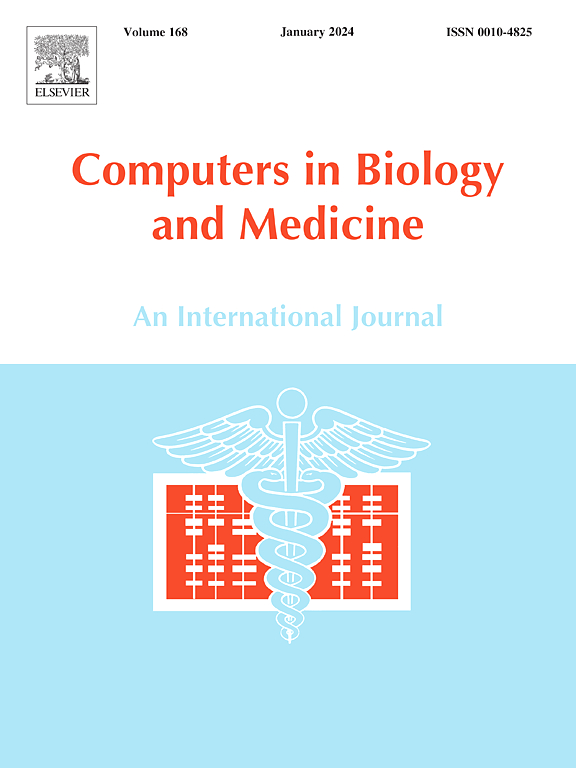miR在急性髓性白血病中调控癌基因和肿瘤抑制基因的鉴定:生物信息学方法
IF 6.3
2区 医学
Q1 BIOLOGY
引用次数: 0
摘要
急性髓系白血病(AML)是最具侵袭性的血液系统恶性肿瘤之一,其特征是祖细胞突变破坏正常的细胞凋亡和细胞分化,导致未成熟髓系细胞不受控制的增殖。癌基因和肿瘤抑制基因的突变通过促进不受控制的细胞分裂和损害对细胞周期的调节控制,在这一过程中起着至关重要的作用。本研究旨在鉴定AML中调节这些癌基因和肿瘤抑制基因的microRNAs (miRNAs)。方法我们分析了通过GDC(基因组数据共享)门户网站获取的TCGA-LAML(癌症基因组图谱-急性髓系白血病)项目的RNA-seq数据。利用R中的DESeq2包,我们发现了显著的失调基因。为了描述生物学功能,我们进行了基因本体(GO)和KEGG途径富集分析。对于临床相关性,我们使用生存和survminer R包通过Kaplan-Meier生存分析评估预后意义。最后,通过整合实验验证和计算预测数据库的数据,我们预测了靶向已鉴定的癌基因和肿瘤抑制基因的mirna。结果deseq2分析显示13个癌基因和12个抑癌基因表达差异显著。生存分析显示,这些基因大多与预后不良相关,风险比超过1,反映了它们作为高危标志物的潜在作用。共有14个mirna被鉴定为这些基因的调节因子。结论在这14种mirna中,发现6种(hsa-miR-15a、hsa-miR-1236、hsa-miR-124、hsa-miR-4755、hsa-miR-5006和hsa-miR-195)同时调控癌基因和抑癌基因。这些mirna可能作为靶向治疗的有希望的候选者,潜在地提高AML患者的生存结果。本文章由计算机程序翻译,如有差异,请以英文原文为准。
Identification of miR's regulating oncogenes and tumor suppressor genes in acute myeloid leukemia: A bioinformatic approach
Background
Acute myeloid leukemia (AML) is one of the most aggressive hematological malignancies, characterized by mutations in progenitor cells that disrupt normal apoptosis and cellular differentiation, leading to the uncontrolled proliferation of immature myeloid blasts. Mutations in oncogenes and tumor suppressor genes play a crucial role in this process by promoting unchecked cell division and compromising regulatory control over the cell cycle. This study aimed to identify microRNAs (miRNAs) that regulate these oncogenes and tumor suppressor genes in AML.
Method
We analyzed RNA-seq data from the TCGA-LAML (The Cancer Genome Atlas - Acute Myeloid Leukemia) project accessed through the GDC (Genomic Data Commons) portal. Using the DESeq2 package in R, we identified significantly dysregulated genes. To characterize biological functions, we performed Gene Ontology (GO) and KEGG pathway enrichment analyses. For clinical correlation, we assessed prognostic significance through Kaplan-Meier survival analysis using survival and survminer R packages. Finally, we predicted miRNAs targeting the identified oncogenes and tumor suppressor genes by integrating data from both experimentally validated and computational prediction databases.
Results
DESeq2 analysis revealed thirteen oncogenes and twelve tumor suppressor genes with significant differential expression. Survival analysis indicated that the majority of these genes were associated with poor prognosis, with hazard ratios exceeding 1, reflecting their potential role as high-risk markers. A total of 14 miRNAs were identified as regulators of these genes.
Conclusions
Among the 14 miRNAs, six (hsa-miR-15a, hsa-miR-1236, hsa-miR-124, hsa-miR-4755, hsa-miR-5006, and hsa-miR-195) were found to regulate both oncogenes and tumor suppressor genes. These miRNAs may serve as promising candidates for targeted therapies, potentially enhancing survival outcomes in AML patients.
求助全文
通过发布文献求助,成功后即可免费获取论文全文。
去求助
来源期刊

Computers in biology and medicine
工程技术-工程:生物医学
CiteScore
11.70
自引率
10.40%
发文量
1086
审稿时长
74 days
期刊介绍:
Computers in Biology and Medicine is an international forum for sharing groundbreaking advancements in the use of computers in bioscience and medicine. This journal serves as a medium for communicating essential research, instruction, ideas, and information regarding the rapidly evolving field of computer applications in these domains. By encouraging the exchange of knowledge, we aim to facilitate progress and innovation in the utilization of computers in biology and medicine.
 求助内容:
求助内容: 应助结果提醒方式:
应助结果提醒方式:


